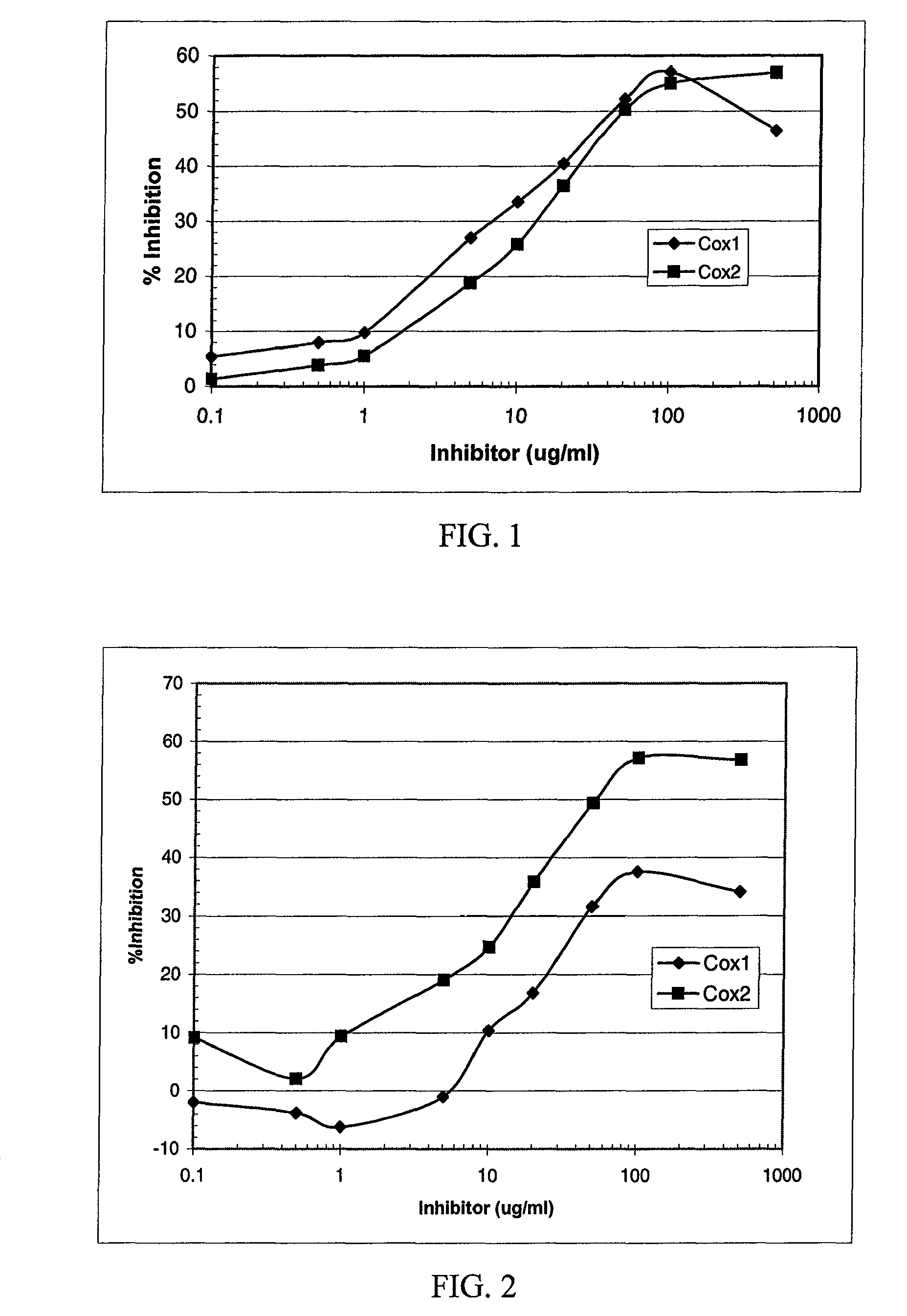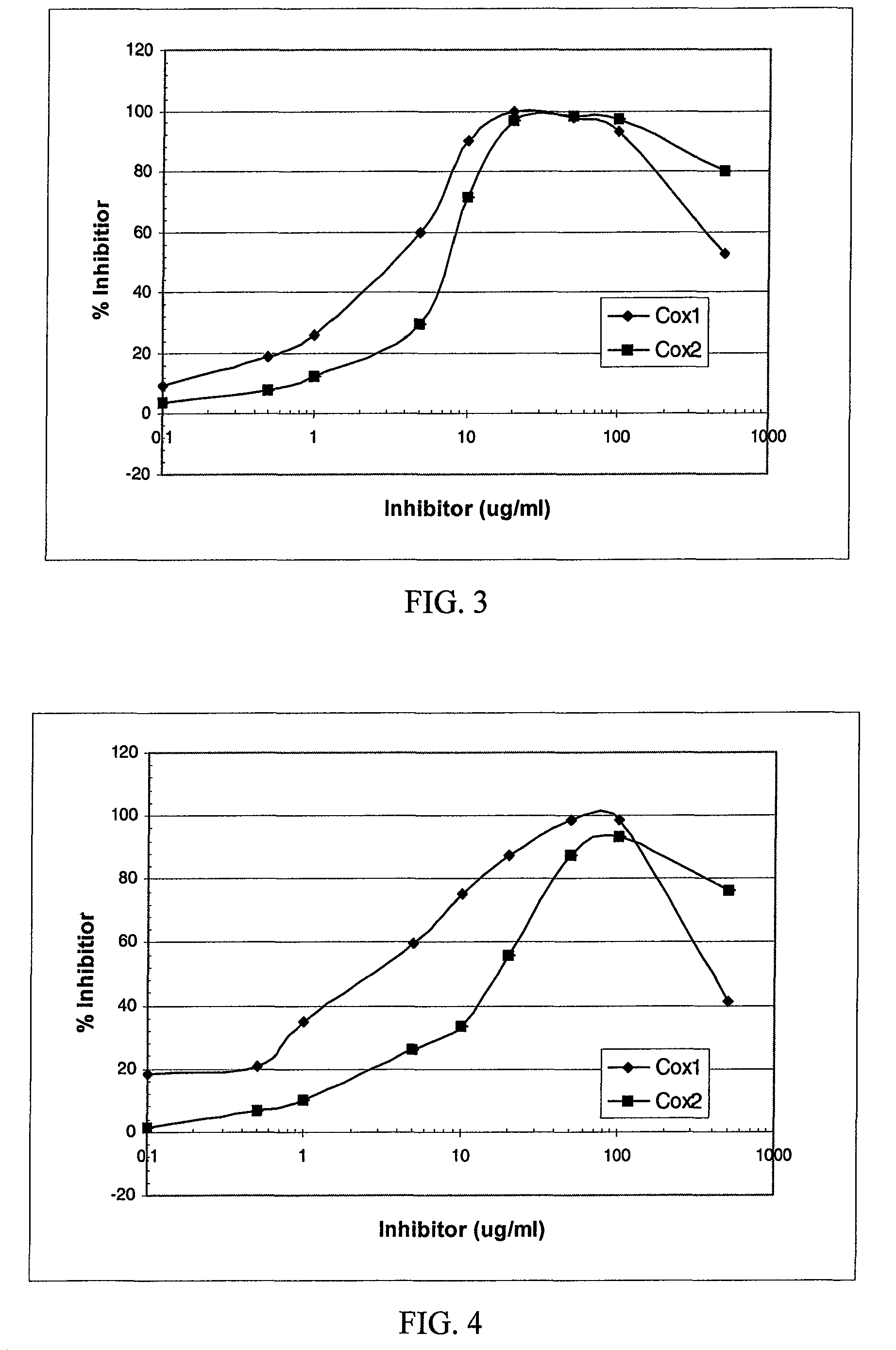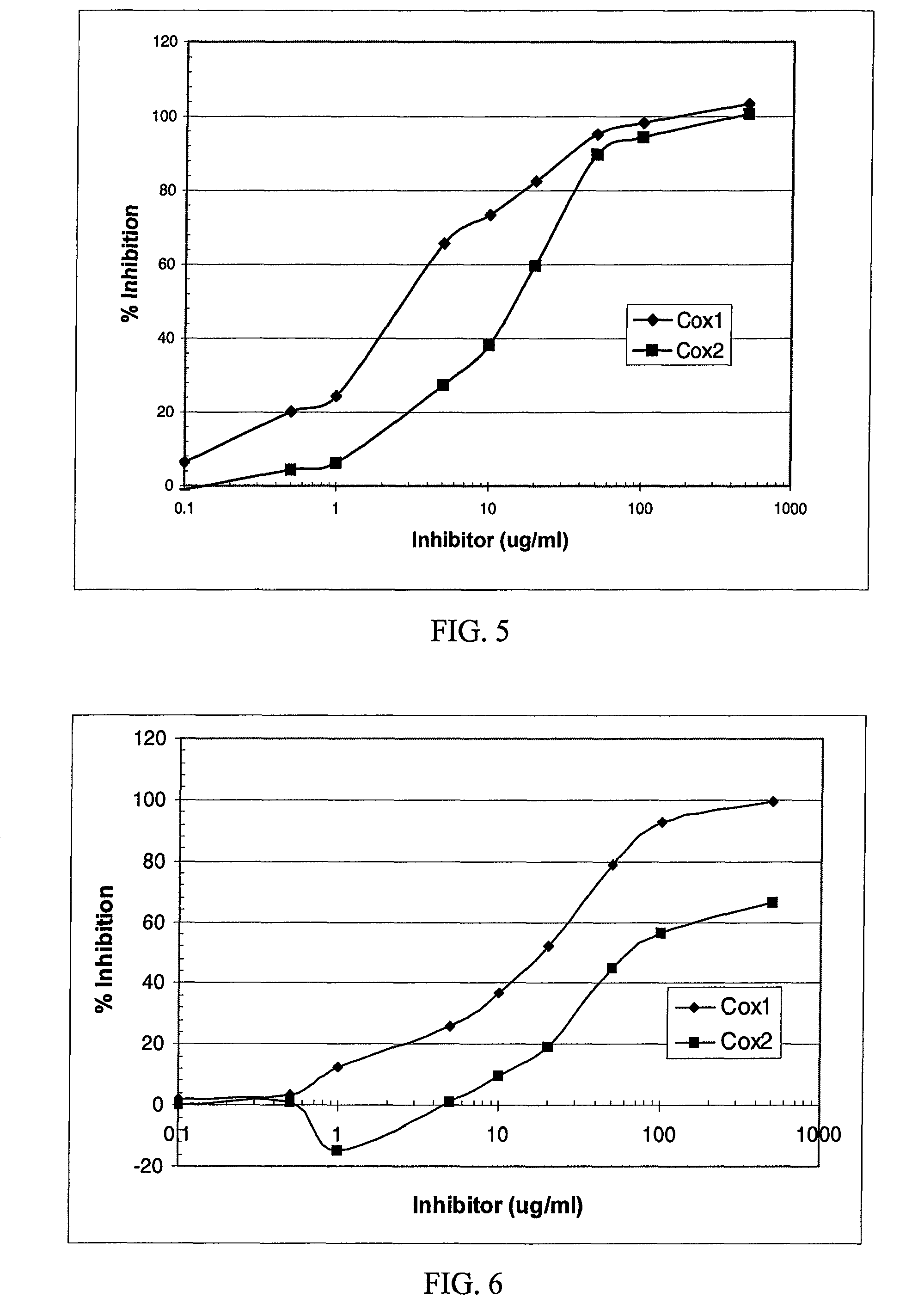Formulation of dual cycloxygenase (COX) and lipoxygenase (LOX) inhibitors for mammal skin care
a technology of cycloxygenase and lipoxygenase, which is applied in the direction of biocide, plant/algae/fungi/lichens, drug compositions, etc., can solve the problems of limited biological activity, damage but not tanning, etc., and achieves enhanced youthful appearance and texture, reduced and delayed aging, and improved elasticity
- Summary
- Abstract
- Description
- Claims
- Application Information
AI Technical Summary
Benefits of technology
Problems solved by technology
Method used
Image
Examples
example 1
Preparation of Organic and Aqueous Extracts from Acacia and Scutellaria Plants
[0141]Plant material from Acacia catechu (L) Willd. barks, Scutellaria orthocalyx roots, Scutellaria baicalensis roots or Scutellaria lateriflora whole plant was ground to a particle size of no larger than 2 mm. Dried ground plant material (60 g) was then transferred to an Erlenmeyer flask and methanol:dichloromethane (1:1) (600 mL) was added. The mixture was shaken for one hour, filtered and the biomass was extracted again with methanol:dichloromethane (1:1) (600 mL). The organic extracts were combined and evaporated under vacuum to provide the organic extract (see Table 1 below). After organic extraction, the biomass was air dried and extracted once with ultra pure water (600 mL). The aqueous solution was filtered and freeze-dried to provide the aqueous extract (see Table 1 below).
[0142]
TABLE 1Yield of Organic and Aqueous Extractsof Acacia and Scutellaria SpeciesOrganicAqueousPlant SourceAmountExtractExt...
example 2
Inhibition of COX-2 and COX-1 Peroxidase Activity by Plant Extracts from Acacia catechu, Various Scutellaria Species and Other Plants
[0143]The bioassay directed screening process for the identification of specific COX-2 inhibitors was designed to assay the peroxidase activity of the enzyme as described below.
[0144]Peroxidase Assay.
[0145]The assay to detect inhibitors of COX-2 was modified for a high throughput platform (Raz). Briefly, recombinant ovine COX-2 (Cayman) in peroxidase buffer (100 mM TBS, 5 mM EDTA, 1 μM Heme, 1 mg epinephrine, 0.094% phenol) was incubated with extract (1:500 dilution) for 15 minutes. Quantablu (Pierce) substrate was added and allowed to develop for 45 minutes at 25° C. Luminescence was then read using a Wallac Victor 2 plate reader. The results are presented in Table 2.
[0146]Table 2 sets forth the inhibition of enzyme by the organic and aqueous extracts obtained from five plant species, including the bark of Acacia catechu, roots of two Scutellaria spec...
example 3
Inhibition of COX-1 and COX-2 Peroxidase Activity
[0150]In order to screen for compounds that inhibited the COX-1 and COX-2 activities, a high throughput, in vitro assay was developed that utilized the inhibition of the peroxidase activity of both enzymes. (Needleman et al. (1986) Annu Rev Biochem. 55:69). Briefly, the composition or compound being examined was titrated against a fixed amount of COX-1 and COX-2 enzymes. A cleavable, peroxide chromophore was included in the assay to visualize the peroxidase activity of each enzyme in presence of arachidonic acid as a cofactor. Typically, assays were performed in a 96-well format. Each inhibitor, taken from a 10 mg / mL stock solution in 100% DMSO, was tested in triplicate at room temperature using the following range of concentrations: 0, 0.1, 1, 5, 10, 20, 50, 100, and 500 μg / mL. To each well, 150 μL of 100 mM Tris-HCl, pH 7.5 was added along with 10 μL of 22 μM Hematin diluted in tris buffer, 10 μL of inhibitor diluted in DMSO and 25 ...
PUM
| Property | Measurement | Unit |
|---|---|---|
| wt % | aaaaa | aaaaa |
| wt % | aaaaa | aaaaa |
| wavelength | aaaaa | aaaaa |
Abstract
Description
Claims
Application Information
 Login to View More
Login to View More - R&D
- Intellectual Property
- Life Sciences
- Materials
- Tech Scout
- Unparalleled Data Quality
- Higher Quality Content
- 60% Fewer Hallucinations
Browse by: Latest US Patents, China's latest patents, Technical Efficacy Thesaurus, Application Domain, Technology Topic, Popular Technical Reports.
© 2025 PatSnap. All rights reserved.Legal|Privacy policy|Modern Slavery Act Transparency Statement|Sitemap|About US| Contact US: help@patsnap.com



